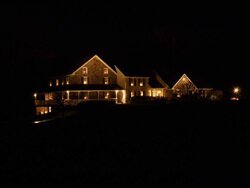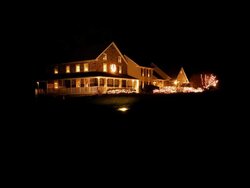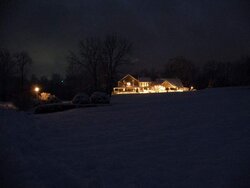All good suggestions, aside perhaps from the lighting, for which I think there is no good ROI for my situation. If I could just get the wife to stop leaving on dozens of lights in rooms she's not using, I'd be in much better shape. True, we don't need 1kW of exterior lighting to survive, but we live in a neighborhood where all the houses are kept lit in the evening / don't want to be the one dark "anti-social" house. In December, I actually put up an
additional 2 kW of small white incandescent bulb strings, but I keep them on only dusk until 11:30pm. Tried the LED's there as well, but they look like chit, IMO.
On the rest of the items, much of it is a convenience / livestyle choice. Yes, there's a little waste with computers, cable boxes, refrigerators, etc., but I don't mind it for the convenience. Refrigerator #2 is mostly stocked with beer and white wine, an extra jug each of milk, orange juice, apple juice, and some frozen items. There are three other refrigerators (five total), as the previous owners hosted a few weddings here, but we have never had any need to plug them in.
The two dehumidifiers running in the basement are not a function of an old house, as most new houses in this area actually seem to have equal or more trouble with musty basements. The air here, in SE PE in general -- but in particular right in my neighborhood surrounded by creeks, is crazy humid in summer. Hot humid air infiltrating a cool basement = mold. We do run a third dehumidifier on the third floor, where much moisture seems to bake out of the mud-stacked stone walls into the hot attic, and that one could be blamed on an old house.
My primary goal was just ensuring I'm not paying more than absolutely necessary, for the amount I'm using, not so much about ways to reduce consumption. After all, someone needs to keep the good folks at the utility companies employed, and ensure maple1's stocks don't drop in value.



 I'm sure you have found as I have that the cost to fix the moisture problem in a stone basement would be worth a many lifetimes of the electric bill. So we live with it as a cost of old house living.
I'm sure you have found as I have that the cost to fix the moisture problem in a stone basement would be worth a many lifetimes of the electric bill. So we live with it as a cost of old house living. he he.
he he.





 closer to what the thermostat is set to downstairs.
closer to what the thermostat is set to downstairs.